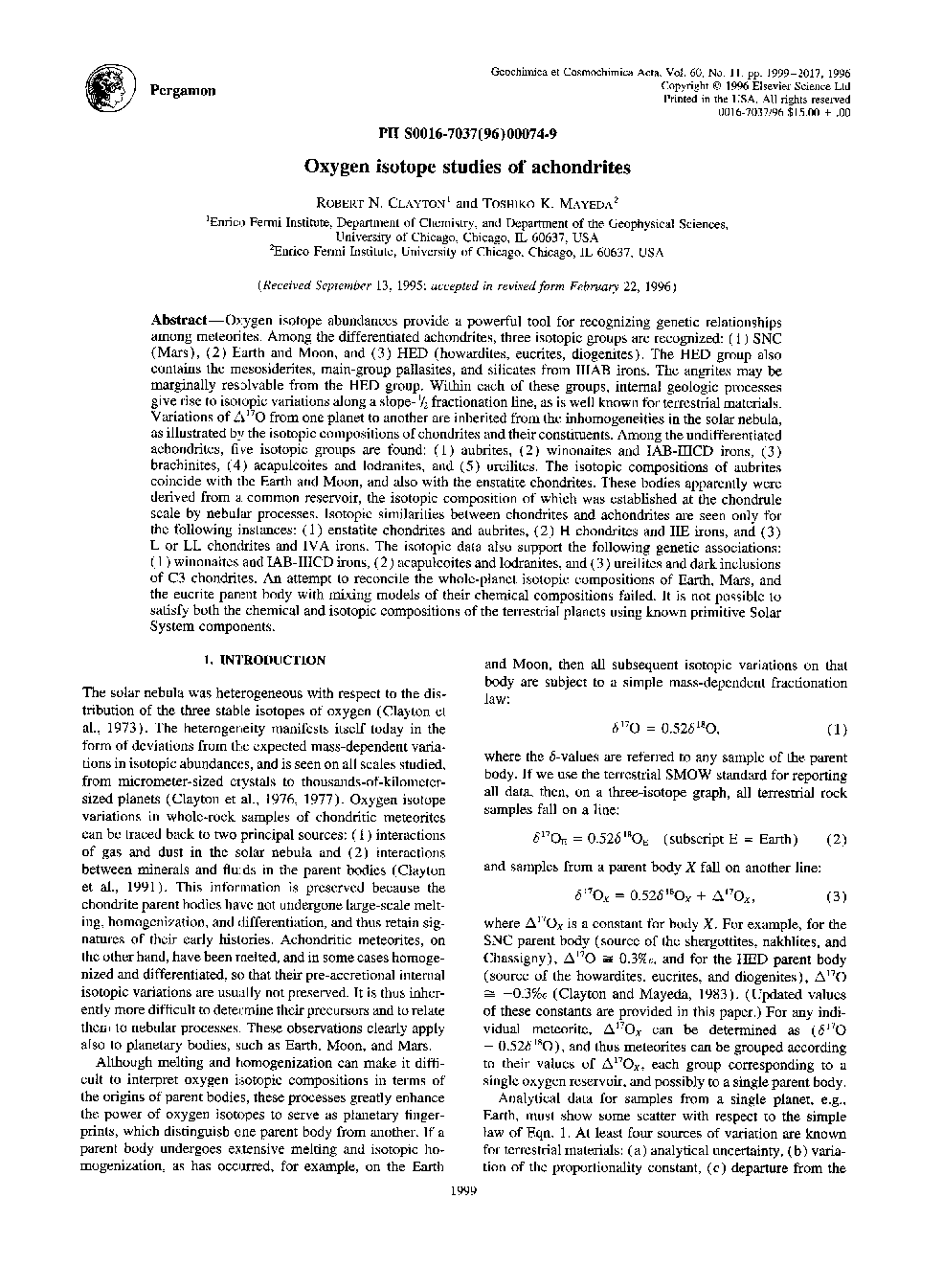| Article ID | Journal | Published Year | Pages | File Type |
|---|---|---|---|---|
| 4710007 | Geochimica et Cosmochimica Acta | 2017 | 19 Pages |
Oxygen isotope abundances provide a powerful tool for recognizing genetic relationships among meteorites. Among the differentiated achondrites, three isotopic groups are recognized: (l ) SNC (Mars), (2) Earth and Moon, and (3) HED (howardites, eucrites, diogenites). The HED group also contains the mesosiderites, main-group pallasites, and silicates from IIIAB irons. The angrites may be marginally resolvable from the HED group. Within each of these groups, internal geologic processes give rise to isotopic variations along a slope-12 fractionation line, as is well known for terrestrial materials. Variations of Δ17O from one planet to another are inherited from the inhomogeneities in the solar nebula, as illustrated by the isotopic compositions of chondrites and their constituents. Among the undifferentiated achondrites, five isotopic groups are found: (1) aubrites, (2) winonaites and IAB-IIICD irons, (3) brachinites, (4) acapulcoites and lodranites, and (5) ureilites. The isotopic compositions of aubrites coincide with the Earth and Moon, and also with the enstatite chondrites. These bodies apparently were derived from a. common reservoir, the isotopic composition of which was established at the chondrule scale by nebular processes. Isotopic similarities between chondrites and achondrites are seen only for the following instances: (1) enstatite chondrites and aubrites, (2) H chondrites and HE irons, and (3) L or LL chondrites and IVA irons. The isotopic data also support the following genetic associations: (1) winonaites and IAB-IIICD irons, (2) acapulcoites and lodranites, and (3) ureilites and dark inclusions of C3 chondrites. An attempt to reconcile the whole-planet isotopic compositions of Earth, Mars, and the eucrite parent body with mixing models of their chemical compositions failed. It is not possible to satisfy both the chemical and isotopic compositions of the terrestrial planets using known primitive Solar System components.
